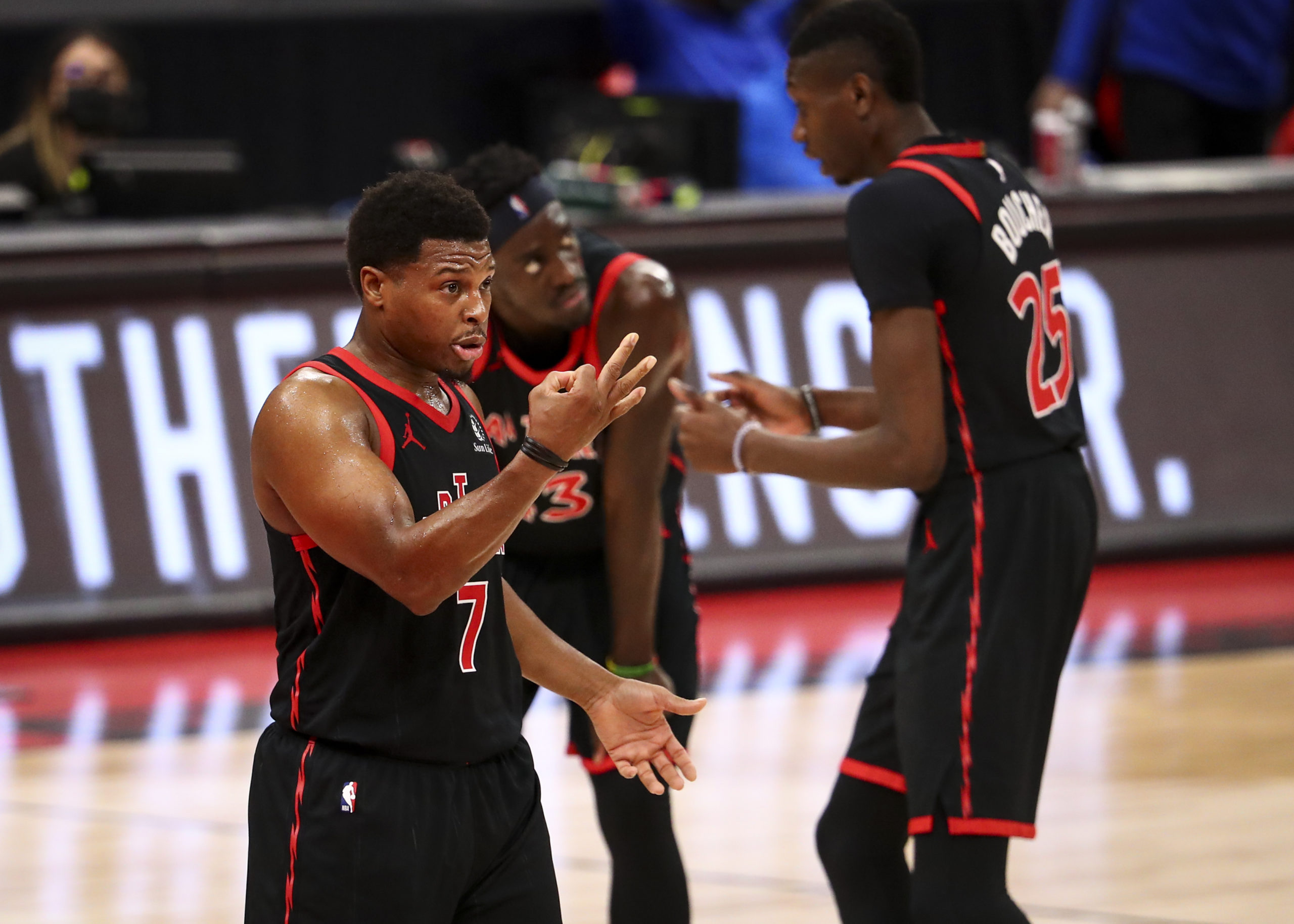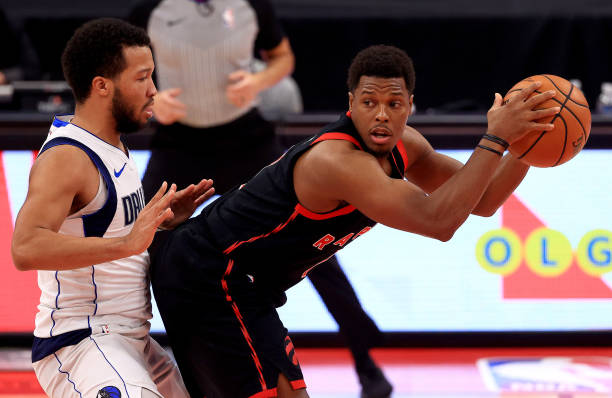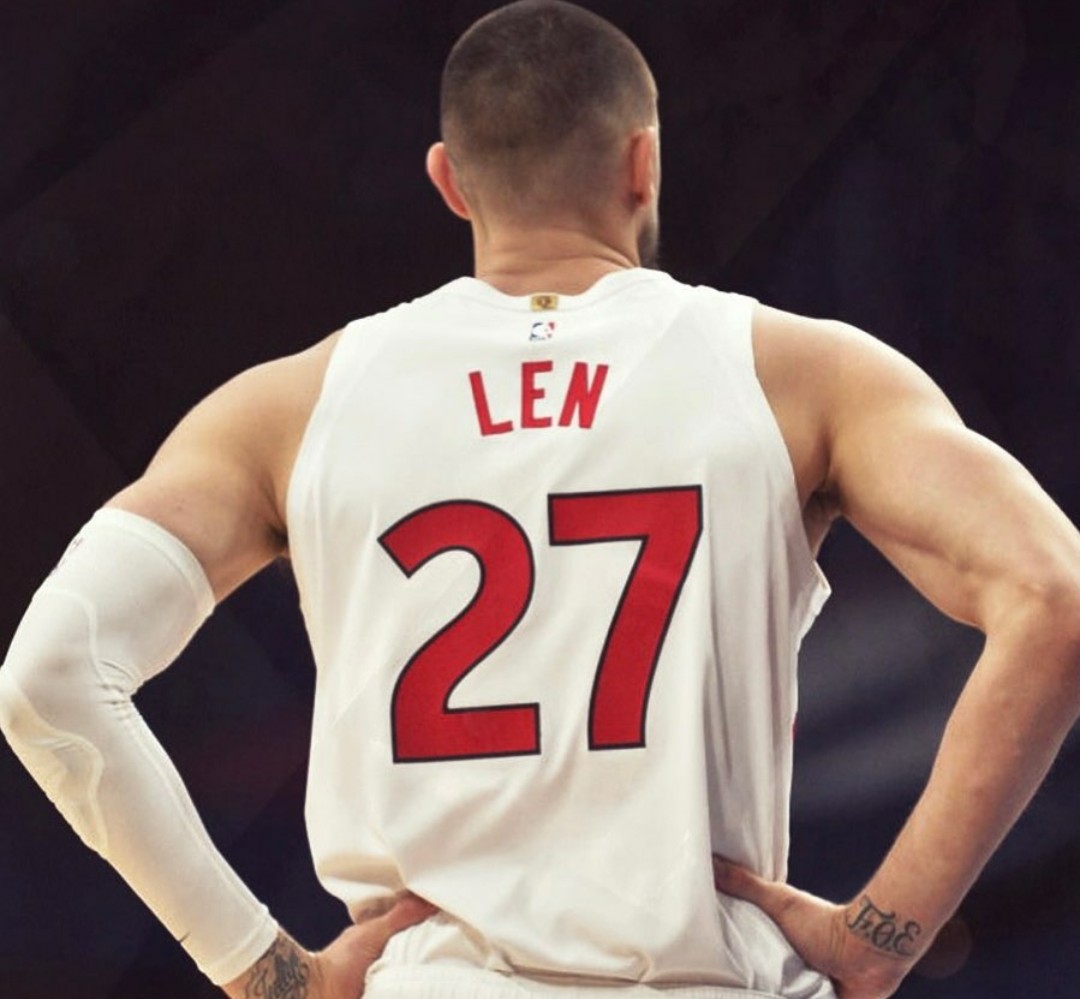If you’ve been holding your breath all season waiting for the Toronto Raptors to look like themselves, then you can stop worrying. Breathe. We finally have our first sighting of the Raptors as expected. Ironically, it happened the same day that I spilled 2500 words calling them “bad at defense.” Oops.
In Toronto’s 116-93 shellacking of the Dallas Mavericks, the Raptors did pretty much everything well. For the first time this year. And when you’re talking about what goes well for the Raptors, that conversation has to start on the defensive end.
Luka Doncic finished with 15 points on only 11 shots, both of which are one away from season-lows for the MVP candidate. The Raptors were excellent at keeping him frustrated, both strategically and emotionally. Nick Nurse and the Raptors cooked up a wonderful gameplan with different zones, plenty of bodies, and multiple defenders getting shots at Doncic as his primary. When reporters tried to praise Stanley Johnson after the game for his individual defense on Doncic, Johnson refused any credit. He didn’t even acknowledge that he was the one guarding Doncic.
“I think what we do best, almost league-best, is play team defense,” said Johnson. “The fact that you guys thinking I’m…guarding anybody by myself is a good thing. Because it’s far from the truth. We play some of the best team defense I’ve been around in my career so far. So it’s pretty easy when you go out there and you playing one guy with five guys.”
Johnson and especially OG Anunoby, whose defense was typically elite, were wonderful as Doncic’s primaries. But as Johnson astutely described, the most impressive aspect was Toronto’s ability to have five bodies working in concert at all times.
“I think we worked hard, first of all, to limit [Doncic’s] touches somewhat,” explained Nurse after the game. “You know, he didn’t seem to have the ball, all the time, like he does in most games. We did do some blitz and again, when he did have it, to take it out of his hands, you know again just probably less opportunities down there. And then probably did a decent enough job when he did get down there to, to kind of move multiple bodies in front so he’s not in the pump fake one-on-one scenario, and he kicked it out a lot, which is what we wanted [him] to do.”
That attention to defensive gameplan has been lacking for complete games this season, and the presence of Toronto’s vaunted team defense was why the Raptors were able to pull away from the Mavericks after letting the Charlotte Hornets back into the two consecutive previous contests. Don’t be surprised that it took Toronto some time to get the defense going this season.
“It takes reps. It takes time. I’ve been here over a year and a half and I just got it,” said Johnson. “I’m just understanding it where I can do it to a consistent level.”
From that perspective, it may be impressive that Toronto is already playing good defense only a dozen games into the season. But the defense was far from the only positive against Dallas.
Toronto’s rotations are starting to crystallize. Aron Baynes remained a starter, and he even started in the second half after three consecutive games during which Chris Boucher assumed that job. Baynes was at least a net neutral — with an even zero in the plus-minus column — for only the fourth time this year. Baynes didn’t give much on the offensive end, but his defense was solid, especially in the first half. Him being able to give 10-15 minutes of solid play while the Raptors stay afloat will be a foundational element in many Toronto wins. The Raptors aren’t going to win starter versus starter minutes every game. But when one or two bench players enter the game with juice, that’s when Toronto can build a big lead.
Speaking about that bench? Chris Boucher is the biggest reason why it’s working.
For the third time in six games, Boucher finished with at least 20 points, 10 rebounds, and 2 blocks, and those are pretty much his averages over that stretch. He’s been stroking triples and diving hard to the rim, giving Toronto much-needed half-court offensive punch. When Boucher has played, the Raptors shoot more two-point shots and make a much higher percentage of them. He blocks everything on the defensive end, and he’s improving at reading rotations. The Raptors usually dominate when Boucher steps on the court. In fact, he has had a negative plus-minus in only three of Toronto’s games all year. He led Toronto against Dallas.
Norman Powell hasn’t had a consistent start to the season, but his offensive contributions were phenomenal in this one. One game after hitting six triples, Powell was great inside the arc on this one. He shot four-of-six at the rim, the most spectacular of which came via a push dribble into the lane before finishing with an athletic, twisting reverse layup. When Powell threatens the rim vertically, it allows the team to find far more consistent offense than simply launching a triple every time down the court.
Though Pascal Siakam and Fred VanVleet didn’t score efficiently — although Siakam picked it up in the second half — they still impacted the game positively on the offensive end. Siakam drew loads of defensive attention every time he touched the ball, and for the most part was wonderful at putting his passes in the right hands to create an advantage.
“That is what I really liked is when he started getting into the heart of the defense, and then finding the open man,” said Nurse of Siakam’s game.
Furthermore, Siakam has transitioned into being a fantastic screener, which has largely been lacking for most of his career. As a screener, Siakam draws so much attention that he allows his guards space for pull-up triples, and both VanVleet and Kyle Lowry hit open pull-ups due to Siakam’s newfound screening process. When he adds those off-ball qualities, including cutting, running the floor, and generally drawing attention even without scoring, he lifts the ceiling of the team immeasurably.
VanVleet was similarly positive, though in different ways. He shot much poorer than Siakam, only finishing with six points, but he was great at still providing offensive punch. In past seasons, VanVleet sometimes liked to overdribble while creating no advantages. Against the Mavericks, VanVleet dribbled with purpose, probing the defense, hitting the paint, and capitalizing with high-calorie passes. He threw a nifty bounce pass into space to create an open layup for Boucher out of the pick-and-roll, and multiple times he pinged the ball to the corners for open triples. He’s become one of the best in the league at passing to open shooters. When Siakam and VanVleet find ways to be offensive positives even though their shots aren’t dropping, the Raptors will find droughts in the half-court offense much more manageable.
Orbiting it all, as always, was Lowry.
Lowry was masterful in every aspect of the game. He probed the defense at every occasion, locking defenders on his hips and forcing bigs to commit, before dumping the ball to waiting teammates for layups. He splashed his triples, especially while drifting to his left. He set hefty screens. He forced turnovers and leaped on loose balls. He attacked the glass on both ends. Lowry was the best player on the court by a significant margin.
The Raptors finally revealed what they look like at their best. A swarming defensive menace that never allows a single portion of the whole to spend time alone. On offense, a series of multiple creators and shooters who each create advantages and ping the ball forward until those inches cascade into open shots. For one night at least, it was reminiscent of last season. As a result, the Raptors are now 5-8, only one game out of sixth place in the East. With only one complete game under their belt, it’s a surprise that they’ve been as competitive as they have. But if the Raptors are themselves again, that one-game deficit certainly won’t keep from them rising in the standings, and fast.



